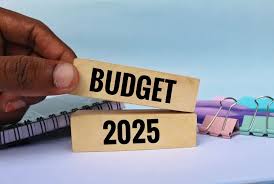
The Union Budget 2025-26 presents a vision of Viksit Bharat, where 70% of women actively participate in the economy. On paper, it offers several initiatives for women’s empowerment—loans for first-time women entrepreneurs, nutritional support for mothers, and financial inclusion measures. However, while urban women and women in formal sectors may find some benefits, the budget largely ignores the harsh realities of rural, tribal, and nomadic women, who continue to struggle with economic hardship, lack of healthcare, and social invisibility.
Urban Women Get a Fair Deal:
For women in cities, this budget does provide some direct and indirect benefits.
Entrepreneurship and Business Support: The ₹2 crore loan scheme for 5 lakh women entrepreneurs under the MSME sector is a positive step. It could help urban women who want to start businesses but lack financial backing. However, without streamlined application processes and real financial literacy support, it may remain inaccessible to many.
Financial Inclusion: The government’s expansion of Grameen Credit Scores and UPI-linked credit cards for street vendors could provide much-needed support to self-employed women in urban areas. The revamped PM SVANidhi scheme could especially help women running small roadside businesses.
Healthcare and Nutrition: The Saksham Anganwadi and Poshan 2.0 programme will continue its reach, ensuring nutritional support for pregnant and lactating mothers. Additionally, Day Care Cancer Centres in district hospitals are a welcome move, as cancer treatment, especially for women, often suffers due to late diagnosis.
Employment & Skilling: With a focus on boosting labour-intensive industries like leather, footwear, and toy manufacturing, the budget promises job creation in sectors where women make up a large portion of the workforce.
Clearly, urban and semi-urban women have something to gain. However, the same cannot be said for rural, tribal, and nomadic women, whose everyday struggles remain largely unaddressed.
Rural Women: Still Left in the Margins:
Despite repeated claims of inclusivity, the budget does not fully address the structural issues that keep rural women, especially tribal and nomadic women, trapped in poverty.
1. Entrepreneurship Loans—But Who Can Access Them?
The ₹2 crore loan scheme sounds impressive, but does it benefit the rural woman who does not even have a bank account in her own name? Tribal and nomadic women, often landless and undocumented, remain invisible to financial institutions. Without local-level financial access and dedicated assistance, these schemes will continue to serve only those who already have some level of financial stability.
2. No Real Push for Rural Healthcare:
The budget mentions Day Care Cancer Centres, but what about maternal healthcare in remote villages? Women in tribal belts still travel miles for basic deliveries, often risking their lives due to lack of medical facilities.
Mental health, menstrual hygiene, and reproductive care remain absent from the discussion. The lack of access to these services continues to hold back rural women from full participation in economic activities.
3. Skilling and Employment? What Employment?
While the budget promotes MSMEs and manufacturing jobs, it does not create meaningful employment opportunities for rural women engaged in agriculture and informal work.
Women in rural India, particularly in tribal areas, are still engaged in backbreaking labour as farmhands, bidi workers, and construction labourers, yet the budget does not focus on improving wages, working conditions, or social security for these informal workers.
The Rural Prosperity and Resilience programme mentions women but remains vague on how exactly it will help them move beyond low-paying, unstable jobs.
4. Nomadic Women: The Forgotten Citizens:
India’s nomadic and semi-nomadic communities, including many pastoralist and artisan women, continue to lack basic identification documents, preventing them from accessing loans, jobs, or even food subsidies.
There is no mention of mobile education centres, healthcare services, or economic initiatives tailored for these communities. Without these, the idea of Sabka Vikas remains incomplete.
What the Budget Should Have Done:
While the budget does take steps in the right direction, it misses crucial interventions that could truly uplift rural, tribal, and nomadic women:
A dedicated National Mission for Rural Women’s Livelihoods: Beyond loans, there should be direct financial aid, skill development, and self-help group (SHG) strengthening programmes.
Better implementation of healthcare for women in rural and tribal areas, including more mobile medical units, menstrual hygiene schemes, and maternity care.
Recognizing unpaid labour: Rural women, especially those in agriculture, contribute significantly to India’s economy but receive no direct benefits. Providing social security, fair wages, and recognition for their work should have been a budget priority.
Education and digital literacy for rural women: Without these, financial inclusion schemes are meaningless. Women must be able to access and control their finances.
Conclusion
A Budget That Looks Progressive, But Lacks Depth:
The government has made bold claims about women’s empowerment in Budget 2025-26. However, while urban and educated women may find some opportunities, rural, tribal, and nomadic women continue to be left out of the larger economic framework. The budget provides seeds of change, but unless these policies are implemented with a ground-level approach, they will not bear fruit for those who need them the most.
The real question remains—will these budget allocations reach the women in the remotest corners of the country, or will they remain figures in a financial statement? Only time will tell.
(In arrangement with Straight Talk Communications)


